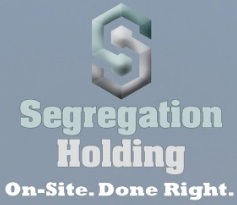Cost segregation and new construction is like a hand in a glove! Seriously, if you are contemplating new construction, cost segregation should be your first thought!
The potential benefits of having a Cost Segregation Study (“Cost Seg”) performed on new construction can increase the available assets that qualify for cost segregation by as much as 20%. That means for every million dollars of anticipated construction costs there is up to an additional $200,000 in Sec. 1245 tangible personal property created out of the Sec. 1250 real property. Tangible personal property (§1245) is depreciated over 5- & 7- years; these assets are elements in a building such as movable partitions, decorative molding or lighting, window treatments, and more. By modifying the construction methodology to increase the short-life Sec. 1245 tangible personal property there is a corresponding increase in short-term depreciation which increase available cash flow.
The reason is that many assets, by virtue of “how” they are attached or “designed into” a structure, can be modified by the architect in the design phase to literally “create” qualifying short-life assets (aka, tangible personal property <§1245>).
 The IRS, in its Cost Segregation Audit Techniques Guide (ATG), which was written for its auditors, says that a Cost Segregation Study using “the detailed engineering approach from actual cost records, or ‘detailed cost approach,’ uses costs from contemporaneous construction and accounting records. In general, it is the most methodical and accurate approach, relying on solid documentation and minimal estimation.”
The IRS, in its Cost Segregation Audit Techniques Guide (ATG), which was written for its auditors, says that a Cost Segregation Study using “the detailed engineering approach from actual cost records, or ‘detailed cost approach,’ uses costs from contemporaneous construction and accounting records. In general, it is the most methodical and accurate approach, relying on solid documentation and minimal estimation.”
Accordingly, it stands to reason that if your Cost Segregation Study is performed in compliance with the IRS’ “most accurate approach,” then you are at a significant advantage if your tax return is ever audited. In fact, using this approach may even reduce your chances of being audited because you are using the required method deemed most accurate by the IRS.
A Cost Segregation Study offers your commercial business numerous benefits. Property owners can substantially reduce taxable income, maximize current depreciation by accelerating deductions, increase cash flow, and minimize property tax assessments since property tax bills are based on the value of real property. If you want to know what other experts are saying about Cost Segregation, please check out this AICPA newsletter for some great articles that discuss Cost Segregation studies in much more detail.
For more information…
Email: [email protected], or
Tweet @SHLCostSeg, or
www.SegregationHolding.com, or
Call 972-893-9081.


